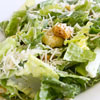Bring a large saucepan of salted water (add about ½ teaspoon to water in the pot) to a boil. Add the green beans and cook until just fork tender, about 4 minutes. Drain and rinse under cold running water to stop the cooking. Drain again and set aside. In a large serving bowl, toss together the green beans, red onion, and bell pepper. In a small bowl, whisk together the vinegar, mustard, sugar, salt, and pepper. Slowly whisk in the olive oil until thick and emulsified. Add half of the mint and mix well. Drizzle the dressing over the vegetables and toss well. Sprinkle with the remaining mint and walnuts just before serving. Serve at room temperature. Makes 6 servings.



